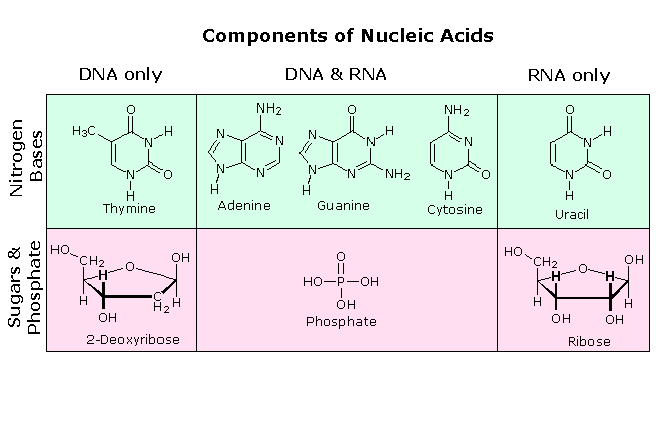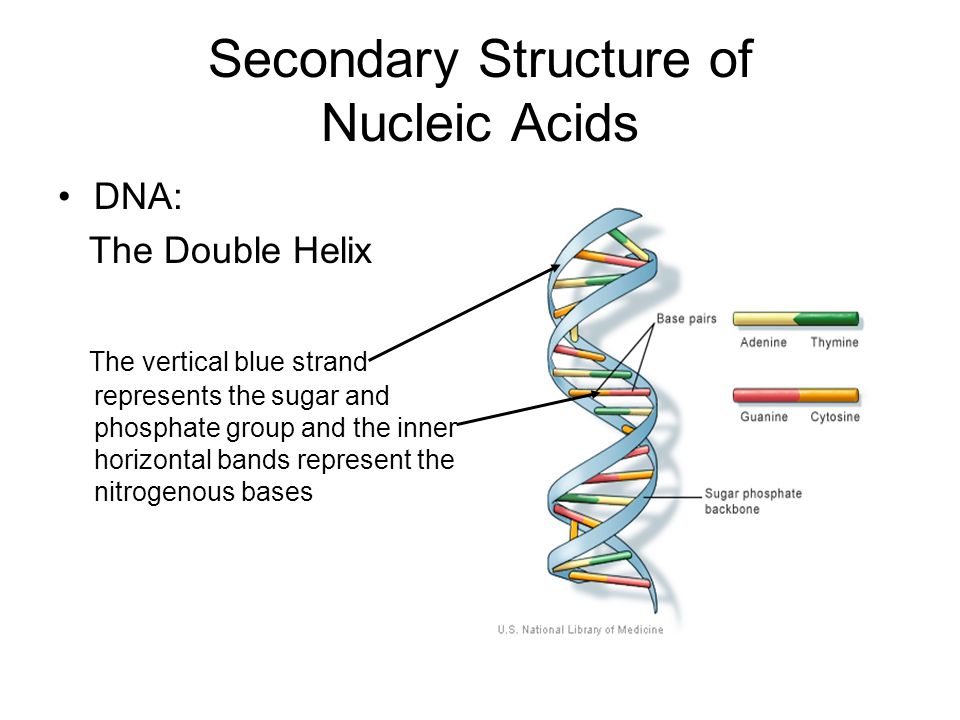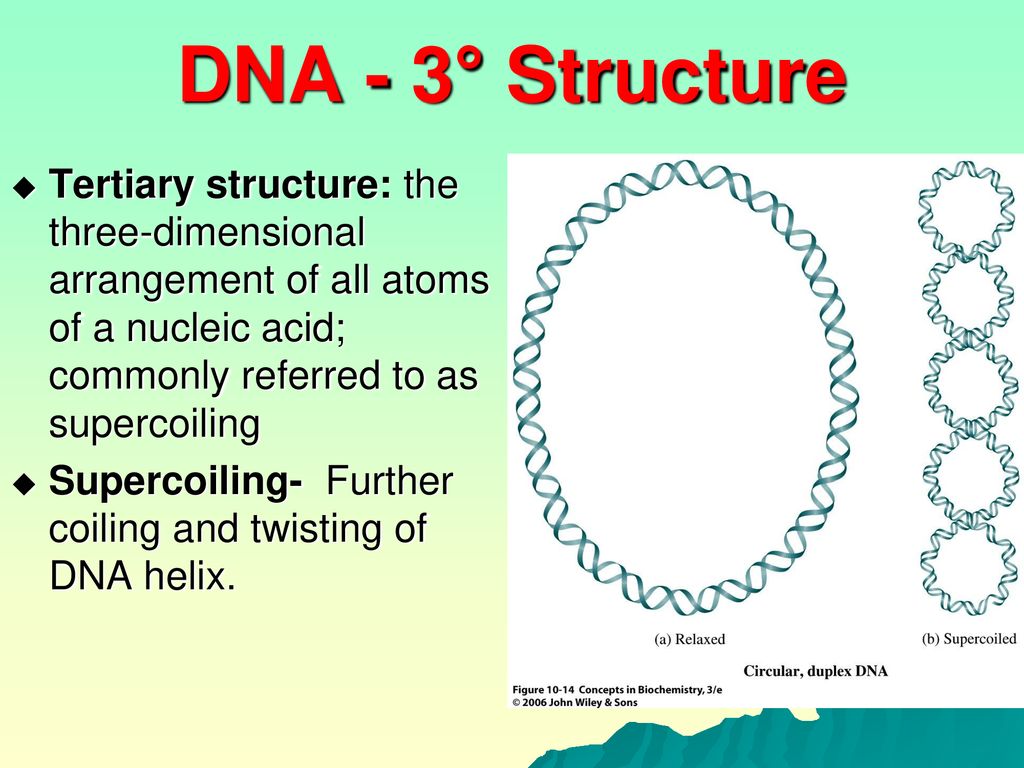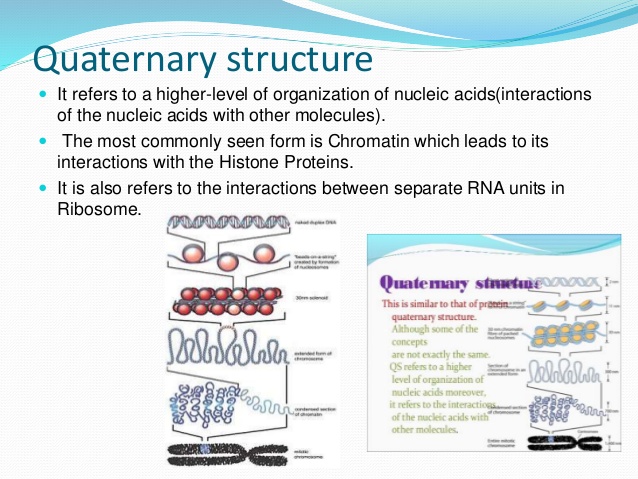Nucleic acids are biochemical macromolecules that store and transfer genetic information in cells. They use stored genetic information to direct the synthesis of new proteins in cells. New proteins can be synthesized by ribosomes from DNA and genes held in nucleic acids.
Nucleic acids are found on the chromosomes of every living cell. Chromosomes are found in the nucleus of every living cell. Nucleic acids are an important part of chromosomes because they hold all the genes that comprise the organism’s DNA. DNA continually directs and maintains the health of organisms and the internal environment by directing the production of proteins, which direct the production of hormones, other proteins and enzymes.

Structure of Nucleic Acid
The structure of nucleic acids is divided into four different levels, namely primary, secondary, tertiary and quaternary structures.
Primary structure
 The primary structure of nucleic acids is the linear sequence of nucleotides, which are connected to each other by phosphodiester connections.
The primary structure of nucleic acids is the linear sequence of nucleotides, which are connected to each other by phosphodiester connections.
Nucleotides consist of three components – nitrogen bases, 5-carbon sugars and phosphate groups.
Nitrogen bases are purines (adenine, guanine) and cytosine pyrimidines {, thymine (present in DNA only), uracil (present in RNA only)}.
5 carbon sugar is deoxyribose for DNA and and ribose sugar in RNA.
Purine bases, forming glycosidic bonds between nitrogen and 9 ‘9 – OH groups of sugar molecules.
Pyrimidine bases, they form glycosidic bonds between nitrogen 1 ‘and 9 OH -OH from the deoxyribose.
In purines and pyrimidines, phosphate groups form bonds with sugar molecules between a negatively charged oxygen group and 5 ‘-OH from sugar. Nucleotides form phosphodiester relationships between 5 ‘and 3 karbon carbon atoms, these form nucleic acids. Nucleotide sequences complement each other.
Secondary structure

The secondary structure is the interaction between bases. This structure shows the part where the strands are bound to one another. The two DNA strands in the double helical DNA are bound to each other by the hydrogen boundary. Nucleotides in base pairs of one strand with other strand nucleotides. The secondary structure of DNA is dominated by base pairs of two polynucleotide strands forming a double helix.
Tertiary structure

Tertiary structures are three-dimensional shapes in which the whole chain is folded. Tertiary structure arrangements differ in four structural forms:
- Left or right hand
- Length of helical change.
- Number of base pairs per turn.
- The difference in size between the main and small grooves.
Quaternary Structure

Quaternary structure is a higher level of nucleic acid organization. This structure refers to the interaction of nucleic acids with other molecules. The organization most frequently seen is a form of chromatin which shows interactions with small histone proteins.
9 The Function of Nucleic Acid
There are several other important functions of nucleic acids, which are as follows:
- It has a very important function which is to store genetic information and transfer it to offspring.
- Using genetic information in the process of new protein synthesis.
- Deoxyribonucleic acid acts as a place for genetic information in cells.
- DNA plays a role in controlling the synthesis of RNA in a cell.
- Genetic information is transmitted from DNA to the formation of proteins in cells.
- The sequence of nitrogenous bases in the backbone DNA is in the way of determining the synthesized protein.
- RNA functions to direct the process of protein synthesis.
- m-RNA plays a role in taking genetic messages from RNA.
- T-DNA transfer process to activate amino acids, to the place of protein synthesis.
Thus the discussion article on the Definition and Function of nucleic acids, hopefully the article is easy to understand.
If you like the article we can follow it through the Random Creative Blog Feed or subscribe to get information from us.
Read Also : Cell Organelles: Definition, Structure, Function, Various
